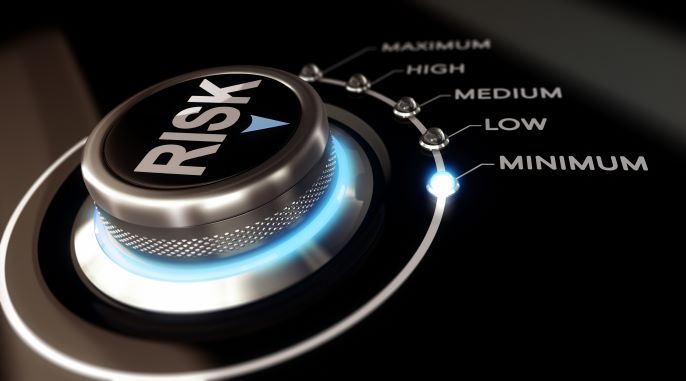Risk assessment is an important part of any Internet of Things (IoT) project. By identifying and assessing risks early on, organizations can take steps to mitigate potential problems. There are a number of risks associated with IoT projects, including data security, data privacy, and system reliability.
Data security is a particularly important concern, as IoT devices are often connected to sensitive data sources. Data privacy is also a concern, as many IoT devices collect personal data. Finally, system reliability is a concern because IoT systems are often complex and interconnected. By identifying and assessing these risks early on, organizations can take steps to mitigate them. This will help ensure that IoT projects are successful and deliver the desired results.
IoT projects are inherently riskier than traditional IT projects for several reasons. First, IoT projects often involve the integration of a wide range of devices and systems, which can increase the complexity of the project and make it more difficult to manage.
Second, IoT projects usually require the development of new technologies or the adaptation of existing technologies to a new context, which can lead to unforeseen technical problems. Finally, IoT projects often involve the collection and analysis of large amounts of data, which can present privacy and security risks. Despite these risks, IoT projects can also offer significant benefits, such as increased efficiency and productivity. Therefore, it is important to carefully assess the risks and benefits of an IoT project before deciding whether or not to proceed with it.
The “Internet of Things” has become a ubiquitous term in recent years, but what does it actually mean? In short, the IoT is the network of physical objects that are embedded with electronics, software, sensors, and network connectivity that enables these objects to collect and exchange data.
Simply put, anything that can be connected to the internet can be part of the IoT. While this may sound like a utopian dream come true, there are numerous risks and challenges associated with the deployment of IoT projects. This blog post will explore some of the key risk factors involved in IoT projects and offer tips for mitigating them.

The risks can be categorized in the following order:-
- Security risks – The internet of things is a hotbed for cybercrime, as hackers can exploit interconnected devices to gain access to sensitive data or launch attacks on businesses and individuals.
- Privacy risks – With so many devices collecting and sharing data, there is a heightened risk of privacy breaches and information theft.
- Compatibility risks – As the internet of things grows, it is likely that incompatible devices and platforms will emerge, making it difficult for users to connect and interact with all their devices.
- Interference risks – With so many devices communicating wirelessly, there is a risk of interference and signal disruption.
- Dependency risks – As we become more reliant on interconnected devices, we may be at risk of losing access to important services or information if those devices malfunction or are unavailable.
- Power risks – The internet of things is a power-hungry beast, and as more devices come online, the demand for energy will only increase. This could lead to higher electricity bills or even blackouts in some areas.
- Regulatory risks – As the internet of things expands, governments and regulatory bodies will need to grapple with how to manage and control this new technology.
- Social risks – The internet of things has the potential to change the way we live and work, and it is important to consider the social implications of this before it becomes widespread.
- Environmental risks – The internet of things could have a significant impact on the environment, both in terms of the energy it consumes and the waste it produces.
- Economic risks – The internet of things has the potential to disrupt traditional business models and upend existing industries. This could lead to job losses and economic turmoil.
A risk assessment is an important part of any project, but especially for a project as complex as the internet of things. There are a number of potential risks associated with such a project, including:
1.Security risks:
With so many devices connected to the internet, it is more vulnerable to attack than ever before. Hackers could gain control of devices and use them to wreak havoc or steal sensitive data.
Causes:-
– Lack of security standards: There is no one-size-fits-all solution for security in the IoT, as devices span a wide range of industries and use cases. This lack of standards makes it difficult to secure IoT devices effectively.
– Unsecured data: Data collected by IoT devices is often stored unencrypted, making it susceptible to theft.
– Poorly designed devices: Some IoT devices are poorly designed and can be easily hacked.
– Lack of awareness: Many people are unaware of the risks associated with the IoT, making them more likely to fall victim to attacks.
Mitigations:-
-Make sure your devices are using the latest security protocol (e.g. TLS 1.2).
-Use strong passwords and two-factor authentication for all devices and accounts associated with your IoT project.
-Developing standardized security protocols
-Regularly update software and firmware for all IoT devices to reduce the risk of vulnerabilities being exploited.
-Monitor devices and networks for unusual activity, and have stringent incident response protocols in place in case of an attack.
-Work with trusted partners who have experience in securing IoT projects.

2.Privacy risks:
The vast amount of data generated by the internet of things could be used to infringe on people’s privacy. For example, companies could use it to target advertising, or governments could use it for surveillance.
Causes:-
-Lack of privacy by design and default settings
-Insecure software and hardware
-Poor security practices
-Lack of user control over data
-Fragmented security landscape
Mitigations:-
-Limit data collection to only the necessary data for completing the task at hand.
-Destroy or erase data as soon as it is no longer needed.
-Ensure that all transmissions of data are encrypted and secure.
– Restrict access to data to authorized personnel only.
-Regularly audit systems for any security breaches or vulnerabilities.
3. Reliability risks:
The complex web of connections between devices could lead to outages or other problems.
Causes:-
1)Lack of standardization.
2)Complexity in the system.
3) Low-quality control.
4)Inadequate testing.
Mitigations:-
-Reducing reliance on single points of failure: In order to ensure reliable operation of internet-connected devices, it is important to reduce or eliminate single points of failure. This can be accomplished through redundancy and diversification of components and systems.
-Design for robustness and flexibility: Another key consideration is to design devices and systems that are robust and flexible enough to accommodate changes in conditions and environment. This will help ensure that the system can continue to function reliably even as conditions change.
-Monitoring and feedback loop:
4.Interoperability risks:
The different types of devices and systems that make up the internet of things might not be compatible with each other, leading to difficulties in integrating them.
Causes:-
-Lack of standardization
– different companies develop their own proprietary protocols and standards, which are incompatible with each other.
– Incompatible software and hardware
– Devices from different manufacturers might not be able to work together because they use different technologies.
Mitigations:-
– Make sure that all devices and systems are compatible with each other from the start. This means conducting thorough compatibility testing and using standards-based technologies wherever possible.
– Create clear and concise documentation for all hardware and software components, detailing how they should be used together. This can help to avoid confusion and ensure that everyone is on the same page.
– Develop contingency plans in case of failure or unexpected behavior. This way, you can be prepared for any potential problems that might arise.
-Finally, involving an expert third-party during the development process can be invaluable in ensuring smooth interoperability between IoT devices and the other systems.
5.Cost risks:
The costs of developing and deploying the technology, as well as the ongoing costs of maintaining it, could be higher than expected.
Causes:-
-Development and deployment costs could be higher than expected due to the complexity of the technology and the need for specialized skills and infrastructure.
-Ongoing costs could be higher than expected due to the need for security and maintenance updates.
Mitigations:-
– Review the budget regularly and make changes as needed
-Create a reserve fund to cover unexpected costs
-Get estimates from more than one contractor before beginning a project
-Plan ahead and stay within budget as much as possible
-Be prepared to adjust your plans if necessary.
Conclusion
By taking the time to assess the risks associated with your IoT project, you can avoid unpleasant surprises down the road. Mitigating these risks may require changes to your plans or additional investment, but it will be worth it in the end. Are there any other risks that you would add to this list? Let us know in the comments.

Chris Ekai is a Risk Management expert with over 10 years of experience in the field. He has a Master’s(MSc) degree in Risk Management from University of Portsmouth and is a CPA and Finance professional. He currently works as a Content Manager at Risk Publishing, writing about Enterprise Risk Management, Business Continuity Management and Project Management.

